Nasriati: Kerman, Iran (Part 1)
The wheels of Mahan Air aircraft that I boarded from Tehran just touched down the runway at Kerman Airport, Iran. It was almost 1.30 am. The aircraft was full of passengers. Many of them must have been the passengers from the earlier flight that the airline cancelled on the very day. Otherwise, with the earlier flight, I was supposed to arrive at 4 pm yesterday. With the help of my perfect stranger in Tehran, Yanti, I could get on this flight although its schedule was bad.
Anyway, I arrived safely and the driver from the hotel already waited for me on the way to the baggage claim area. Yanti had also arranged my pick-up with the hotel. The driver recognized me right away as the passenger that he should pick up.
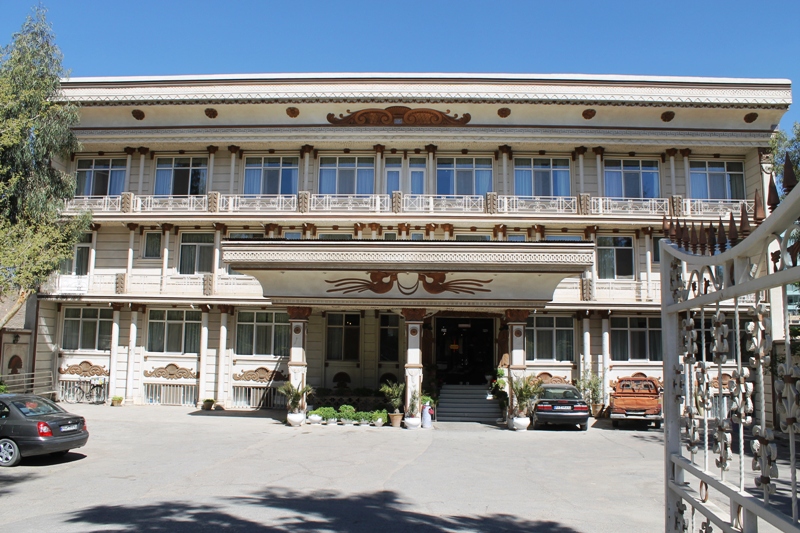
As soon as I was out of the airport building, I could feel the cold weather permeating my skin. In early April 2017 the weather in Iran was cold, especially late night. Despite being tired, the new atmosphere of the city brought energy to me. It was my first visit to Kerman on my second trip to Iran.
Once the car moved on, I could see that the area by the airport was vast and dry. The street was very quiet. There was no activity on all the way to the hotel. The driver didn’t say any words as he spoke no English. Within less than 30 minutes I was already in front of the hotel. The hotel attendant, who happened to be the hotel owner, gave me the key. When I wanted to give him my passport for the registration, he just simply said, “Tomorrow.” He showed me the room while the driver was helping me to carry my luggage to my room on the second floor.
I entered my neat twin-bed room. The interior looked old, but it was fine. I was sleepy so I just changed my clothes and went to bed. However, like in any new place, I could not fall asleep right away. As I laid down my mind was going back to how I got the room. My other perfect stranger in Kerman, Nasriati, had a big role in booking it.
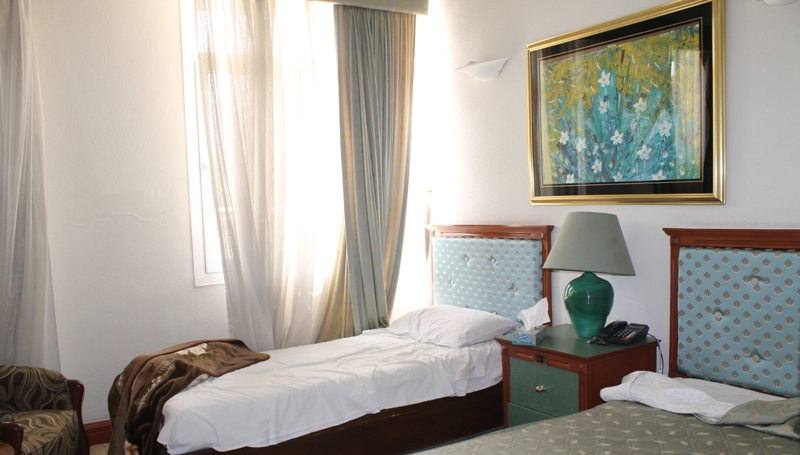
An Indonesian in Kerman
On my second visit to Iran, I wanted to visit Kerman. It was the closest city to Kalout Desert. I really wanted to see the sand dunes and real desert. I wrote in See You in Iran–a platform for tourists coming to Iran–to get more information from the group members. My message had caught the attention of one of its members. She sent me a message in my Inbox, and surprisingly she was an Indonesia. I never found an Indonesian living in Iran unless she or he was a diplomat. And luckily the woman who is called Nasriati lived in Kerman. That was a perfect combination. At that time, she had lived in Iran for the last 12 years. She married an Iranian man.
That was a few months before I came to Iran. In the course of time Nasriati had shared with me some information about Kerman. And what made me happy was she was willing to accompany me when I visited the city.
Logistic arrangement has been an issue because international financial transactions with Iran were totally truncated. I already identified the hotel to stay in Kerman. To secure my room the hotel needed down payment. My timing of arrival was around Nowruz, a big festival in Iran, where the demand for the hotel was still high, as the man from the hotel argued. However, it was unlikely to use my credit card for payment. And Kak (Sis) Nas, Nasriati’s nickname, helped me to sort this out. She would help me to pay the down payment first. After her tough negotiation with the hotel, she could book the room for me without down payment.
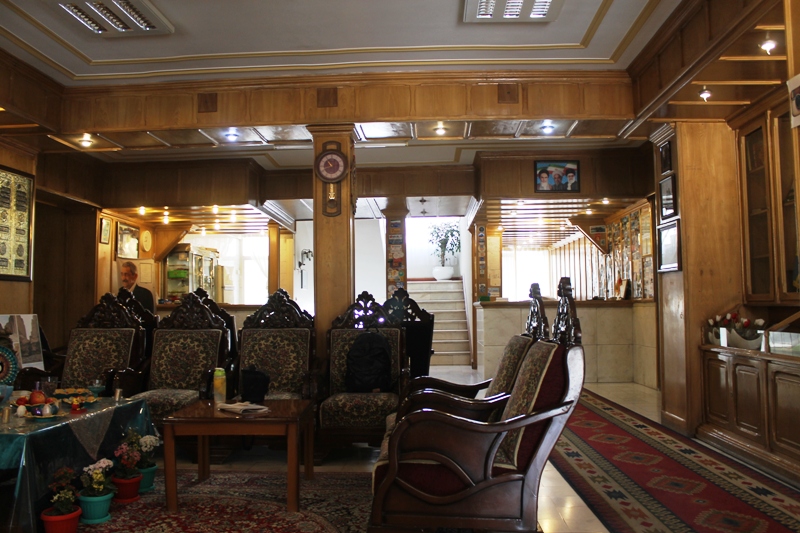
Kak Nas would come to the hotel at around 10 am. I was excited to see her after a few months communicating by writing only. And I was glad to finally meet her in person. We talked a while before going out. She already knew the kind of places I liked to see, and most importantly, she realized that I wanted to take public transportation. As always, I was interested in seeing how the locals lived.
Ganjali Khan Complex
It was a perfect day to go out. It was very sunny. But it was deceiving because the temperature was cold. In my country, the sky that was as clear as like that indicated hot temperature. Well, I came from a tropical country where the daily temperature was around 33 Celsius, so 16 Celsius was cold for me.
Kerman is the capital of Kerman Province that is situated in the southeast of Iran. It is a city that is rich with ancient history and has many cultural heritages. I was looking forward to exploring some of them with Kak Nas. She was a very nice person to talk to, furthermore, she knew the city very well.
I just let her lead me. Our first destination was Ganjali Khan Complex in Old City of Kerman. From the hotel, we walked down a few hundred meters to take a public bus. Like in other cities in Iran, the pedestrian lane was spacious. The street in front of the hotel was not busy either, a rare view of a big Iranian city.
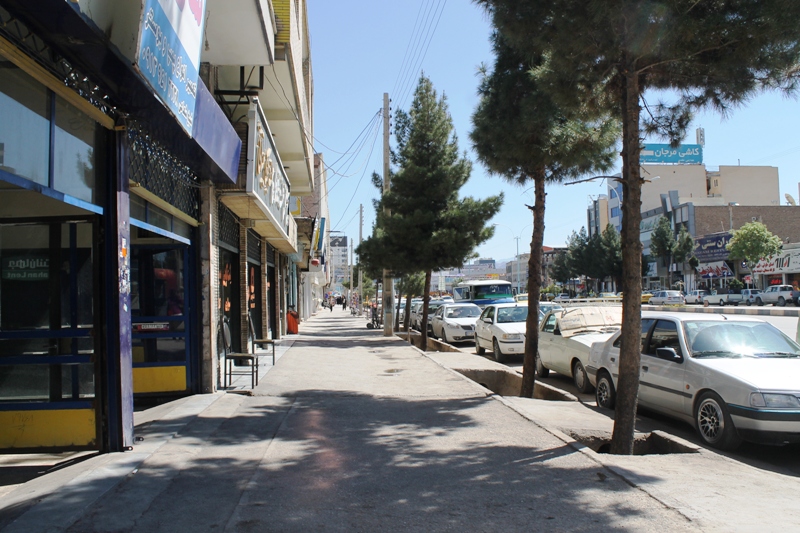
By the Circle that was somewhat a bus terminal, there was a pedestrian bridge. That was good! I needed to collect my courage every time I crossed the streets in Iranian big cities. We took a bus at the Circle where many taxis and buses waited for the passengers.
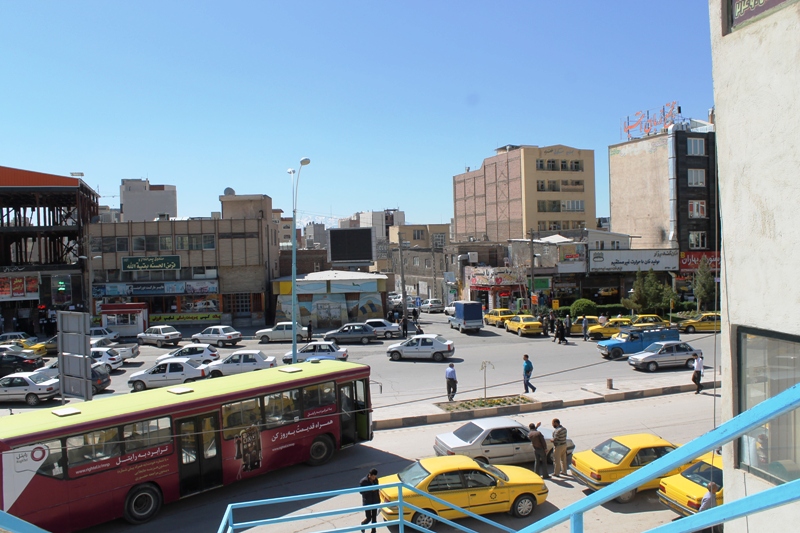
In Iran, women and men were separated in public buses. The women would board in the rear part of the bus. I just followed Kak Nas’ instruction. We got off in a bus stop and from there we walked to Ganjali Khan Complex. We window shopped at some stores as we were walking. I learnt a bit about fashion trends among Iranian women. On our way, I saw a kind of tap water and sink. I asked Kak Nas about it. She said that it was free drinking water for any passers by. What a very nice treat!
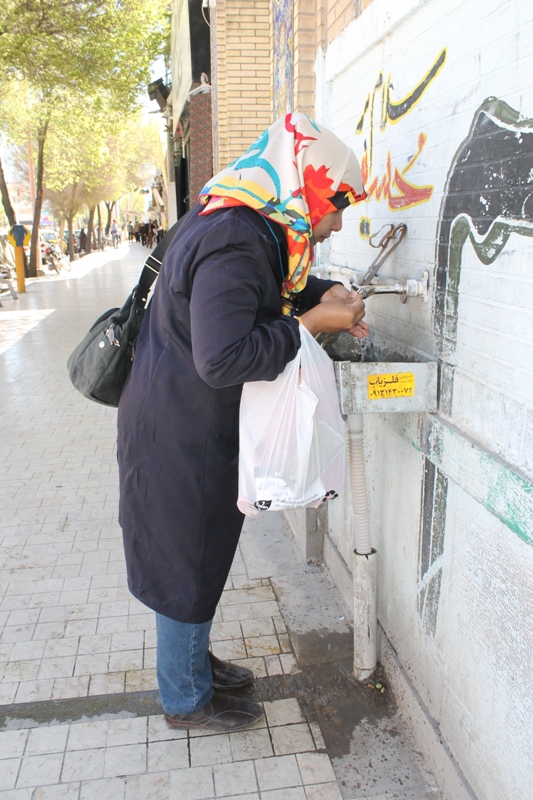
I slowed down my pace as we were near to Ganjali Khan Square. There were some carpet shops, and I could not help to enter them as they displayed their beautiful collections. Many of those carpets were made for wall decorations. The precise and meticulous hand work made the carpets look like paintings. I was so amazed. Kerman has been famous for the production of high quality carpet. The shop attendants didn’t mind me taking some photos of those wall decorations. There were also stores for hand-made brass kitchen wares. They were all very pretty.
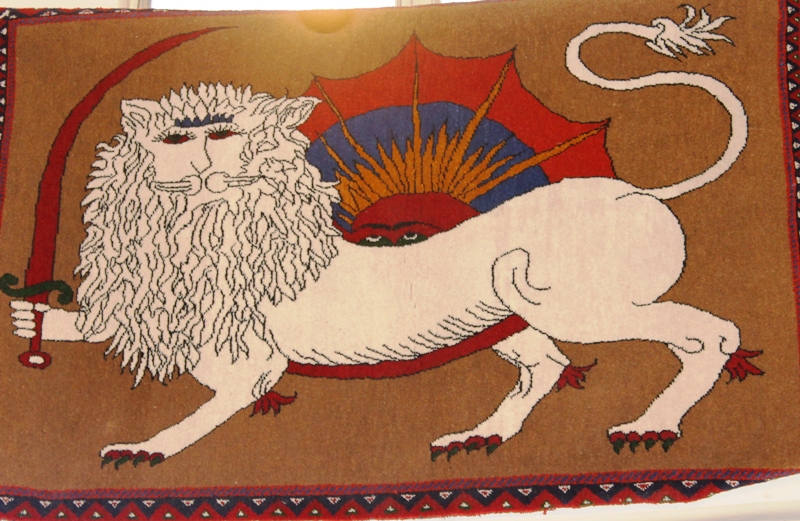
In my first visit to Iran in 2014, I witnessed the heritage of Safavid Dynasty’s architecture in Isfahan. And as I entered the Ganjali Khan Complex I was stunned by another magnificent structure of the Safavid Dynasty. Ganjali Khan Complex was constructed when Ganj Ali Khan governed in and around Kerman in the 16th century. The whole area remained me of Isfahan’s Nashq e Jahan.
Ganjali Khan Complex covers an area of 11,000 square meter. It had the facilities that an old city required: a school, a square, a caravanserai , a bathhouse, a water reservoir, a mint , a mosque and a bazaar. It is a huge complex.
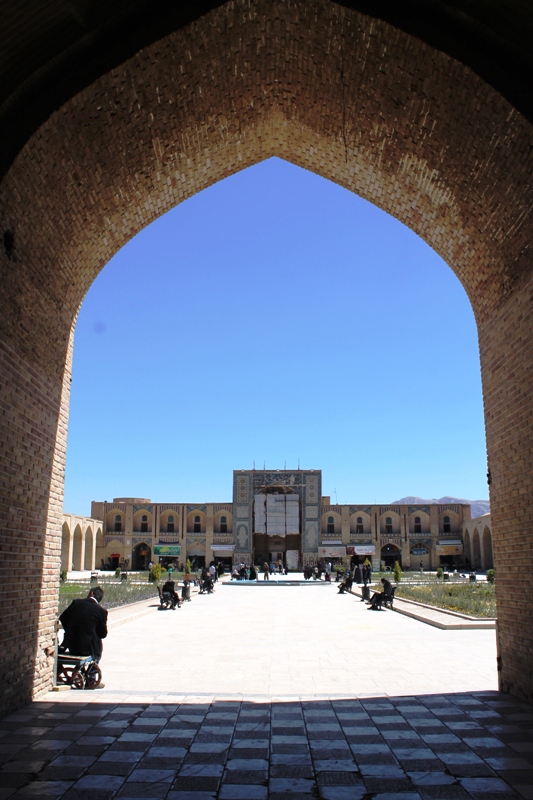
Kak Nas and I walked down from east to the west of the bazaar arcade. The shops mainly sold local products. My interest was in the giant kitchen wares that were used to cook for a large number of people. My gaze eyed on the vaults of the arcade that had 100 percent geometric precision. It was incredible!
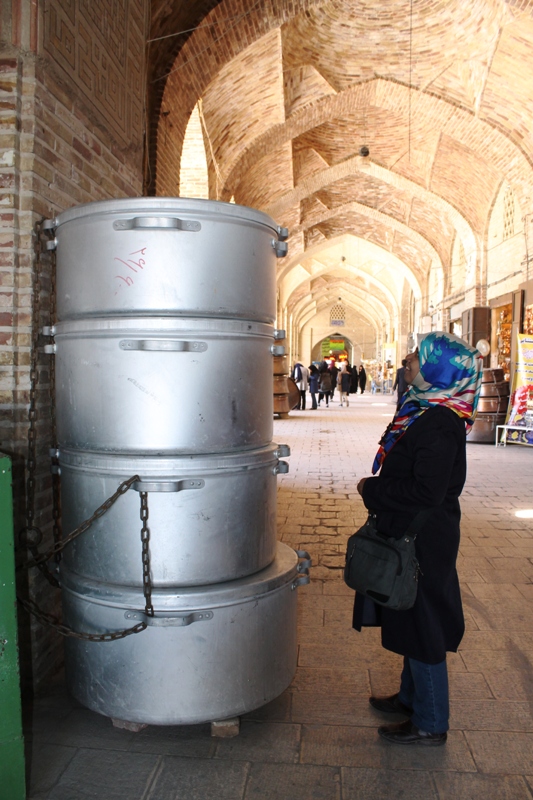
The bath house was another attraction of the Ganjali Khan Complex. The entrance was located in the bazaar. The bath house or hamam was built in the 17th century. Anyone who has been to the bath house in Vakil Bazaar Shiraz or the bath house in Yazd should not miss visiting the bath house of Ganjali Khan. It has another characteristic.
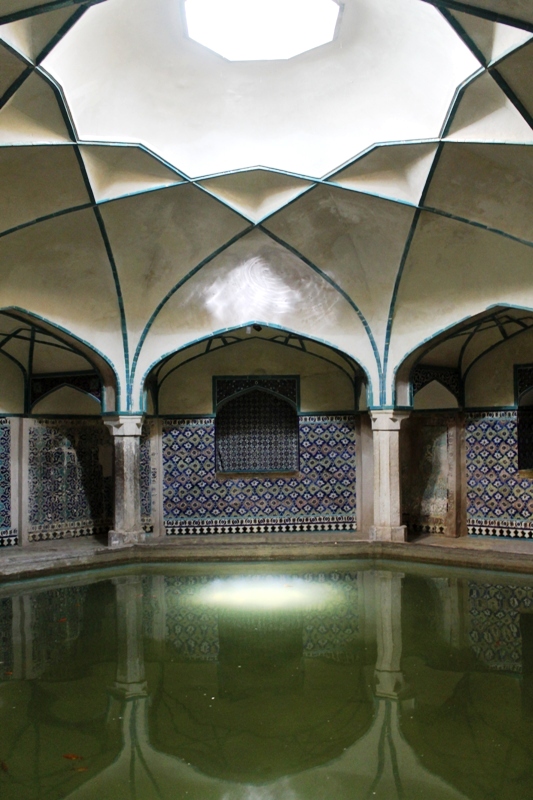
As soon as I stepped in the bath house, I was so enchanted by the tile works that plastered part of the wall and dome. The mosaic tiles had floral and human images. It was dominated by turquoise and blue colors. The stuccos were also remarkable. The engineering aspect of the bathhouse was also astounding like the lighting and the heat that was adjusted with the geometry of the dome. It was in addition to the water supply and heating the water. The bath house served during the hot and cold weather.
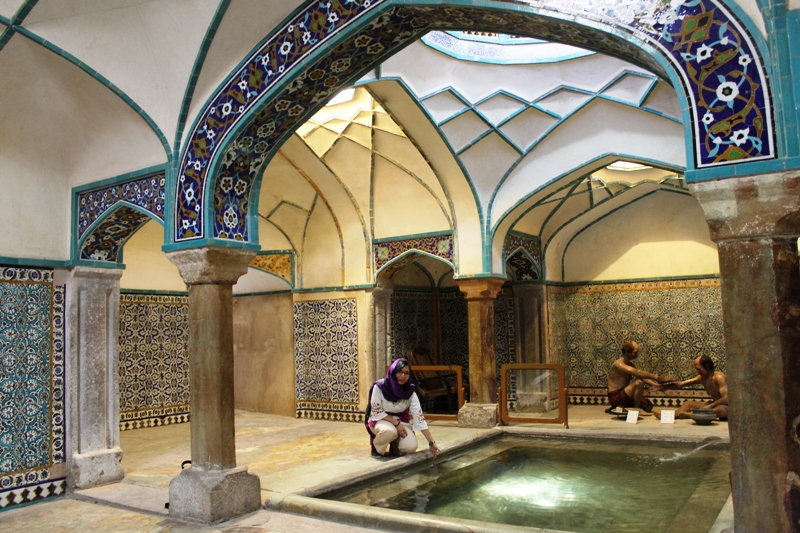
The 64 meter times 30 meters bath house had accommodated people in government, clerics, merchants and also regular workers. Inside the bath house, there were sections for the entrance hall, dressing room, hot house, wardrobes, cleaning house and seat of the government. Now, the bath house has dioramas to depict how people used the bathhouse in the past.
I decided to take a seat on the bank in the square while Kak Nas was sorting her things. I needed to get some warmth. Although the sky was super blue, it was cold. Sitting in the square, I felt the immensity of a spacious square that was occupied with only a number of people.
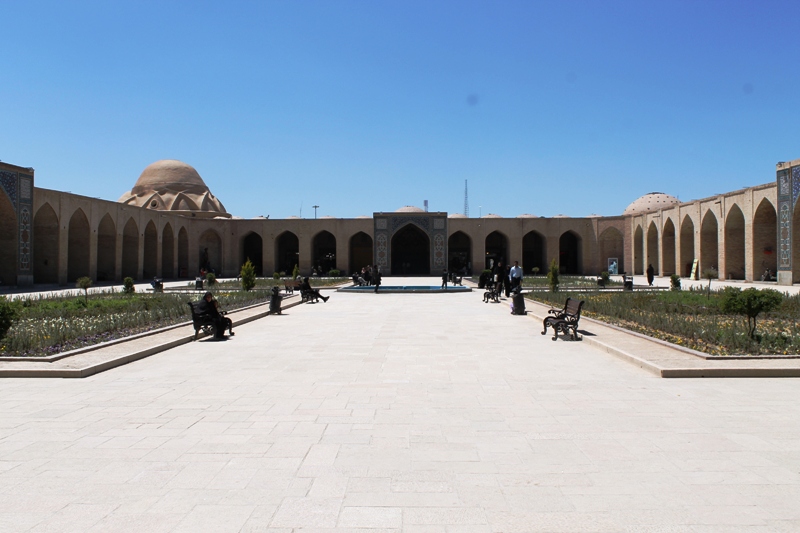
While in the Ganjali Khan complex, we didn’t miss to see the caravanserai. It was located in the east side of the square. In the past caravanserai was an inn where the merchants and travelers rested with their caravans. The past glory of the Ganjali Khan caravanserai was still intact. It has an open rectangular courtyard with one ywan on each side. The facade of the two-story halls was decorated with tile works. The caravanserai was charmed with a small octagonal fountain in the middle. We explored it a little bit and saw some artists did their handicraft works.
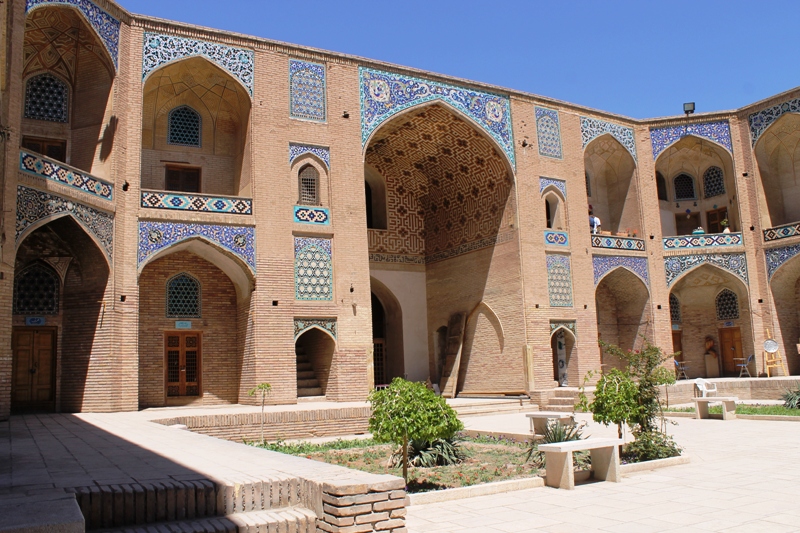
I was happy with my visit to Ganjali Khan Complex. The architectural heritage of the past always fascinated me. As we walked by the stores that we had passed earlier, many of them were closed. “It’s rest time, the stores will open again in the afternoon,” Kak Nas said to me. It reminded me of life in small cities in my country, where people had siesta during the day.
Jame Mosque
We stopped by at fast food kiosk that was open. We went in and ordered burgers and drinks. I was glad to have Kak Nas because she could interpret for me when I talked with the kiosk attendant. After the lunch, Kak Nas said that we could stop by at Jame Mosque Kerman, which was a walking distance.
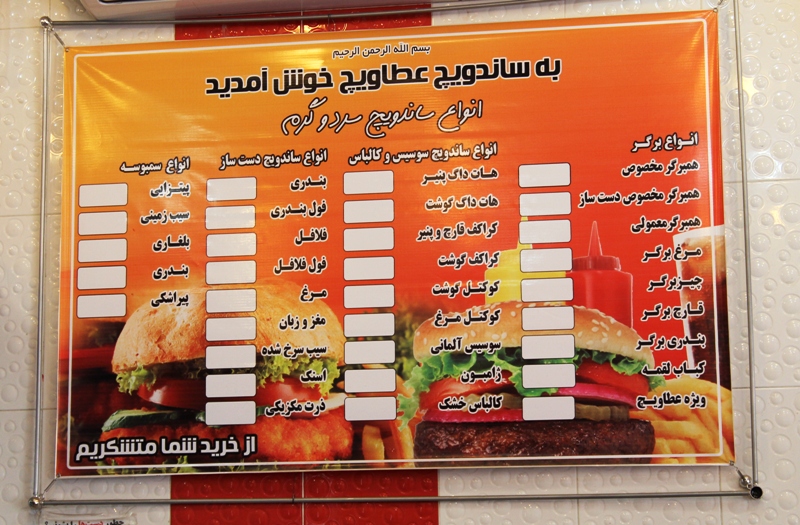
We kept on strolling to Jame Mosque Kerman. From the main street I could see the main portal of the mosque that had a big clock on its tower. We stepped into the declining stairs to the outer courtyard. It was flanked by a two-story arcade on both sides. There was a rectangular fountain in the middle of the outer courtyard that was supposed to work. I came near the portal that had a very lovely ywan. The ywan was decorated by tile works with geometrical and floral motifs as well as calligraphy. It had a dominant blue color. Jame Mosque was built in the 14th century during Muzaffarid Dynasty.
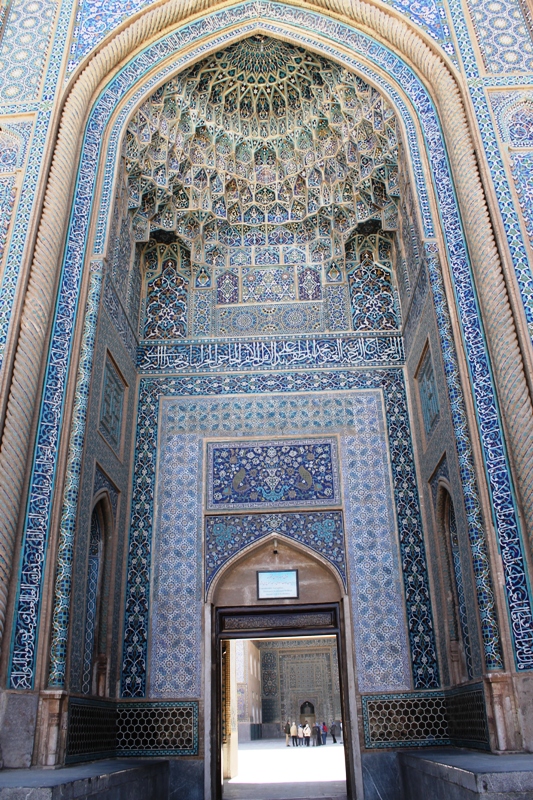
Iran was the only country whose architecture of its heritage buildings undeniably caught my heart. In the portal, I stood under the ywan and looked up to amaze its beauty and the graced half dome. The portal opened up to a large inner courtyard that was enveloped by four ywans. In the inner courtyard, the arcades were decorated by geometrical tiles. We spent some time in the inner courtyard. I went to the mihrab and sat there. It was a beautiful feeling to see the surrounding. Kak Nas was patient enough to wait for me who just sat and did nothing.
Zoroastrianism
Our next destination was the Zoroastrian Temple. Following Kak Nas’ step, I jumped on another public bus, in the women’s section, most of them wore black chador. I was the only one who wore street wears. We got off in another shopping area. There, Kak Nas asked some people about the direction to the Temple. Next, we followed their direction.
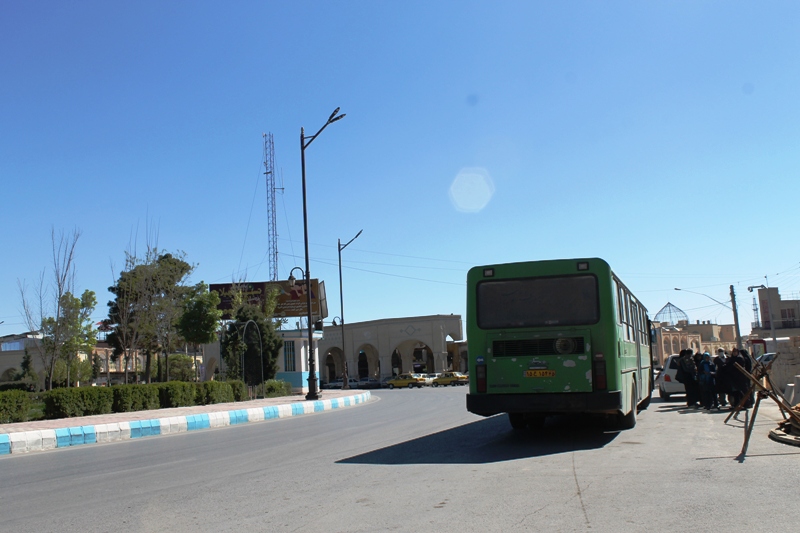
The Zoroastrian Temple was located in a quiet residential area. We didn’t know the exact location as we kept walking. Suddenly, we came across a door with a Faravahar symbol, a symbol of Zoroastrianism, on the door. This must be it. We went inside and found a big courtyard.
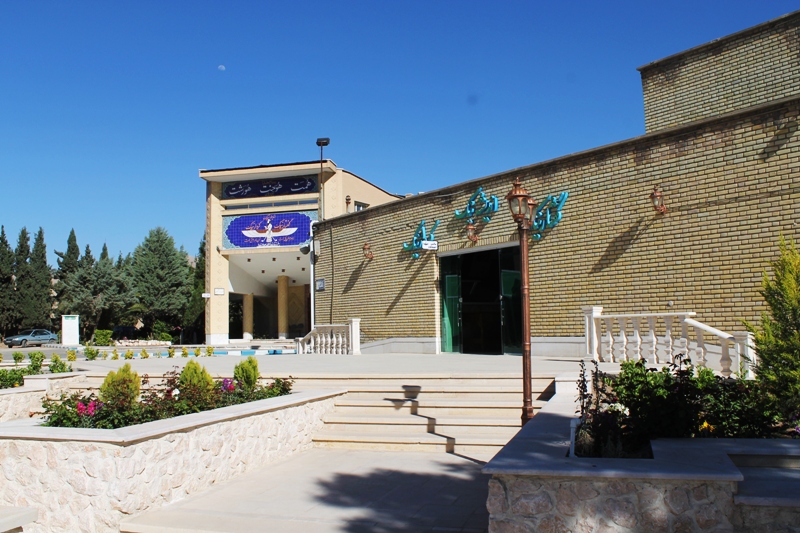
I could see a building with a facade having a Faravahar symbol on it. We approached the building but it was locked. It was eventually a museum. Although we saw some cars in the parking lot, we didn’t see anyone around.
After waiting for a while, a woman came in and asked our intention. Kak Nas explained to her about my visit. The woman unlocked the door. After paying the ticket, we looked around the museum that had a relatively complete collection that was related to Zoroastrianism. The collections were arranged in different sections. There were sections of men and women dresses dating back to 150 year ago and displays of offerings for Zoroastrian’s holidays. “That is the haft seen,” said Kak Nas pointing to a display of seven symbolic arrangements that every house in Iran has during Nowruz. The interesting collection was the handwritten book of Goths and a 200-year old portable fireplace.

I was stirred to see Zoroastrian Temple of Kerman. I had visited one in Yazd before. In the complex, the fire temple was said to be the last one in Kerman with the fire that has been kept alive since a hundred years ago. Outside the temple a set of rules was stuck on the wall. When we were there, there was a small group of people. And I saw a man, a priest, dressed in a full white outfit. We were lucky because the priest was there, otherwise the temple was locked for public. I asked the priest if we could come in. He invited us to come in.
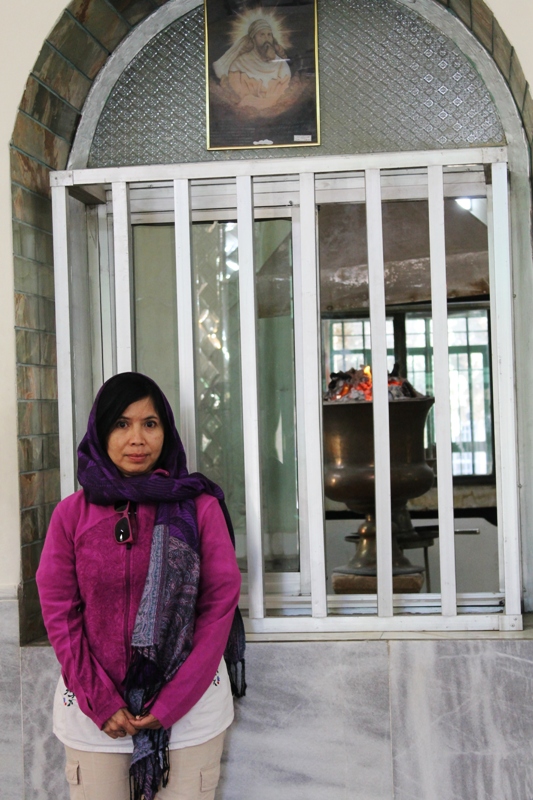
After spending more than one hour, we left. There was still another place that Kak Nas wanted to show me. It was not easy to take a taxi in a quiet area. We needed to walk tens of meters to find a taxi passed by. We got on to the taxi with destination Gonbad Jabaliye. It was located on the outskirts of Kerman.
Gonbad Jabaliye is a stand alone building made of stones, mortar and gypsum. It has an octagonal form and has three floors. Inside the building is empty. From its architectural style it is said that the building is from the Zoroastrianism era of the Sassanid Empire.
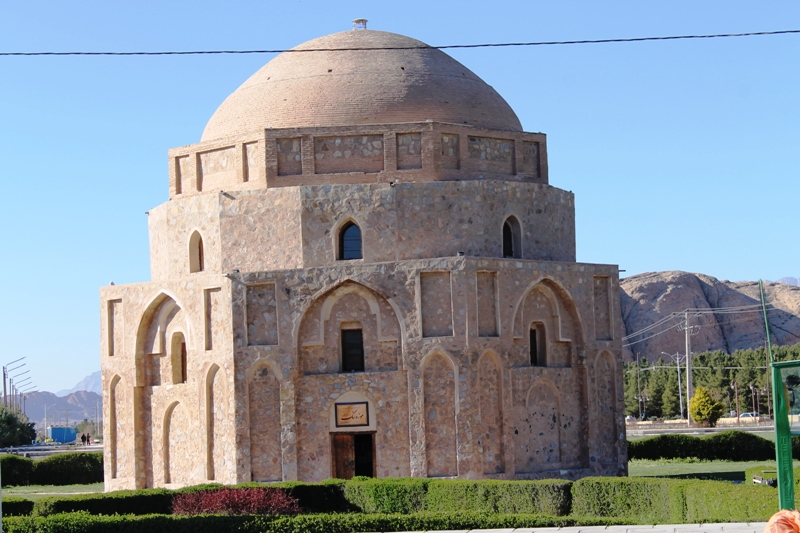
Gonbad Jabaliye was situated in a well-tended garden by the busy highway. There were one or two visitors on that day. So it was relaxing sitting in the garden where the flowers were blossoming and the bushes were green. From the garden, I could clearly see the barren hills that surrounded the area. Their color was in contrast with the cloudless sky. We spent some time in the garden to enjoy the surrounding.
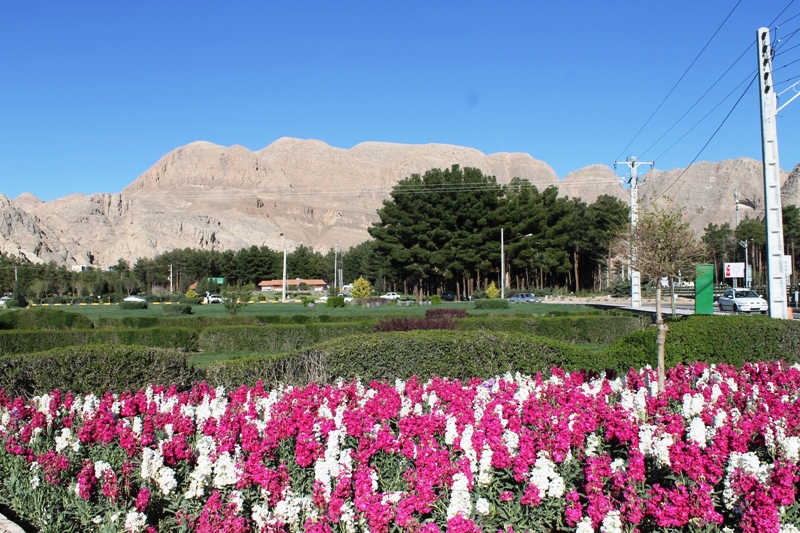
End of the Day
As the color of the sky was about to change, Kak Nas suggested that we leave. This time we took a bus. We got off in an area with some sorts of modern buildings. The streets as well as the pedestrian lane were roomy. And there were some artistic pieces on the street like the painting on the building wall and giant tap water structure. It was cool.
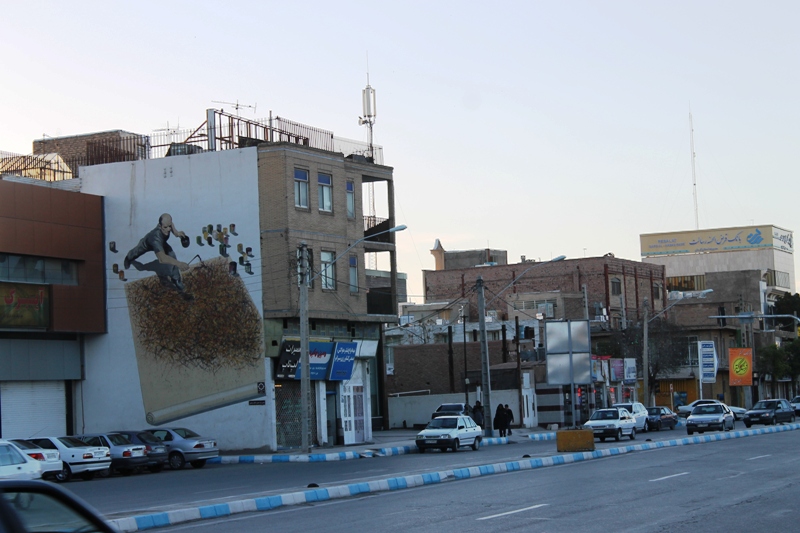
We walked toward a unique ancient building in Kerman: yakhdan (ice house). Yakhdan is an ancient water cooler and ice storage. In the past, the city built yakhdan to store ice that they would use in the summertime. The yakhdan in Kerman is called Moayedi Yakhdan. It was built by Moayed-al Din Reyhan, one of the Seljuk rulers of Kerman. Moayedi Yakhdan is the biggest yakhdan made of mud clay in Iran and in the world.
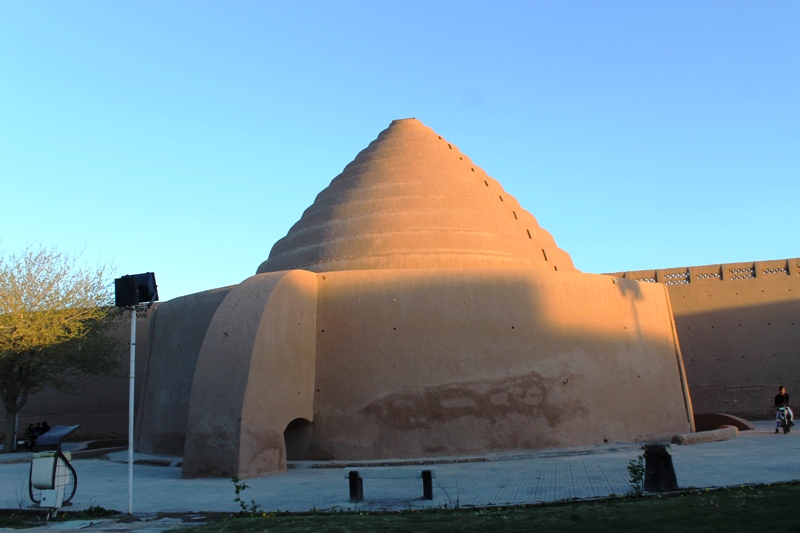
Moayedi Yakhdan has a coned structure and it’s about 18 meters high. I was stunned with its structure and its functions in the past. Now the structure no longer functioned. It is used as a tourism office. Surrounding the yakhdan is a small beautiful garden.
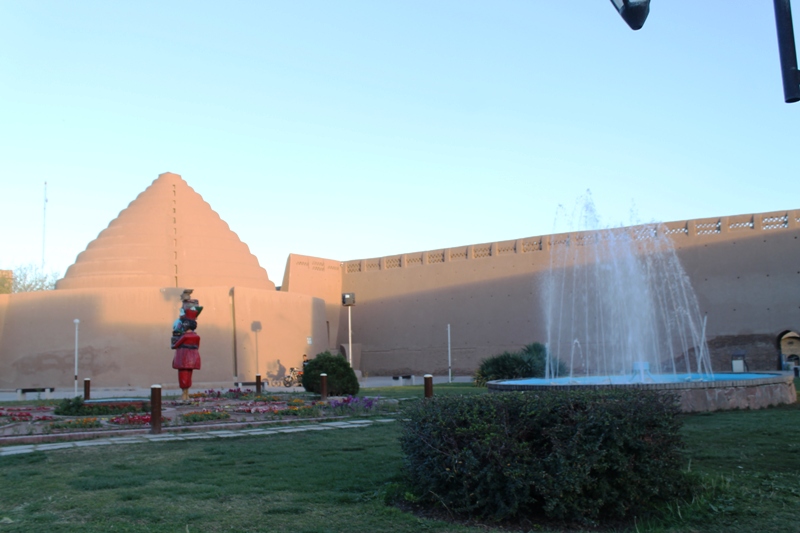
The lamps in the stores and streets were now lit. Soon it would be dark. We ended our tour of Kerman. It was really a day full of experiences and new knowledge. I thanked Kak Nas for her companion, without her I would not be able to explore the city and see its richness. Next day, we planned to visit the most awaited destination: Kalout Desert. “See you tomorrow,” she said.
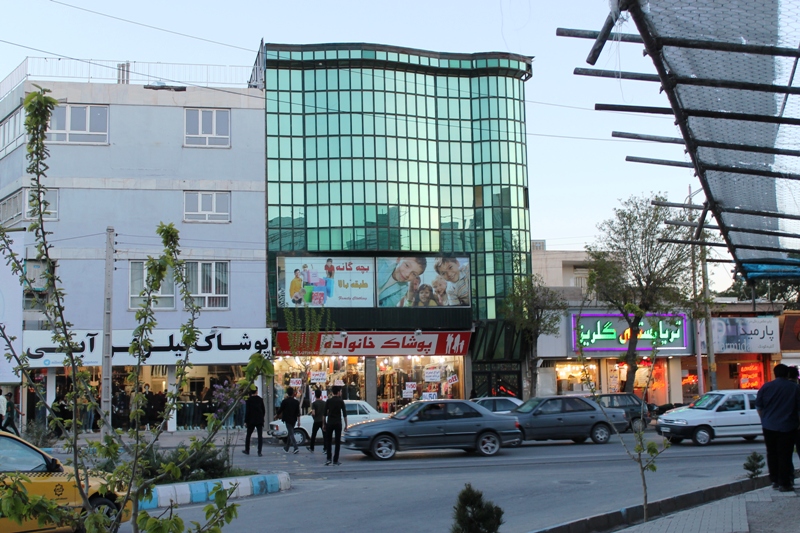
To be continued
